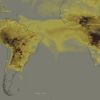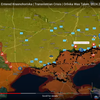Hæðarveiki - ef fólki líður ílla þegar farið er á fjöll, þá getur verið lífshættulegt að halda áfram upp í meiri hæð.
25.8.2017 | 08:31
The Dangers of Altitude Sickness—What to Know About the Condition That Killed a 20-Year-Old Colorado Hiker
What is altitude sickness? “Too high, too fast”
Altitude sickness, sometimes known as mountain sickness, happens when people go “too high, too fast, and don’t allow their bodies time to adapt to the lack of ambient pressure and the lack of relative oxygen,” says Dr. Stepanek. “Our bodies are equipped to make this adjustment, but it ideally takes time.”
Mild signs of altitude sickness include headache and nausea, and for most people visiting a higher-altitude region, that’s as bad as the condition will get. But if it progresses (which it likely will if a person keeps going to higher elevations), it can lead to vomiting, disorientation, fluid in the lungs, and swelling around the brain—all of which can be deadly if not treated quickly.
RELATED: The Best Vacation Spots for Hiking
Visitors—and young, fit people—are at higher risk
“The individuals who are usually struck by altitude sickness are those who fly in from the lowlands—like someone coming in from a lowland location for a ski trip with friends,” says Dr. Stepanek. “It’s very common to have a headache and not feel great for the first few days you’re there.” Luckily, he adds, those symptoms usually pass within three to four days, if you don’t go any higher once you reach your elevation.
That’s one reason young, fit people may be at risk for more complications, he says; they may continue to push themselves. “If you have these symptoms and you continue to ascend, like on a hiking trip, things are only going to get worse.”
Egilsstaðir, 25.08.2017 Jónas Gunnlaugsson
Ég vísa á þessa slóð hjá Læknablaðinu, það er betra að hafa þá með í ráðum. Ég kemst ekki inn á slóðina.







Bæta við athugasemd [Innskráning]
Ekki er lengur hægt að skrifa athugasemdir við færsluna, þar sem tímamörk á athugasemdir eru liðin.